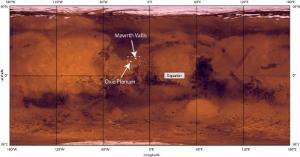News
Landing Site chosen

John Bridges of the Space Research Centre (University of Leicester) explains how Oxia Planum finally won out:
"After over four years of careful study of HiRISE and more recently CASSIS images, Oxia Planum was chosen because scientists were convinced that its fine-grained sediments, deposited during the ancient Noachian epoch were ideally suited for the Exobiology rover.
With an enormous catchment area the sediments will have captured organics from a wide variety of environments over a long period of time, including areas where life may have existed. The fine sediments should also be ideal for the ExoMars drill – it aims to get to 2 metres depth.
Remote identification with the Mars Express and Mars Reconnaissance Orbiter infrared spectrometers shows the presence of clays and other minerals giving clues to its aqueous history.
A large group of scientists have been working on proposing, characterising and down selecting the sites, all of which had fascinating aspects, but Oxia Planum is the clear winner on both science and engineering constraints."
Last modified: Fri, 08 Feb 2019 14:45:38 GMT






